Bird infested EIFS off
in Arlington, Virginia
EIFS tear-off
Replacement with stucco
Arlington, Virginia
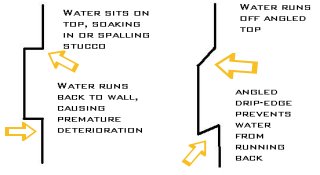
LEFT:
original band.
RIGHT:
My band
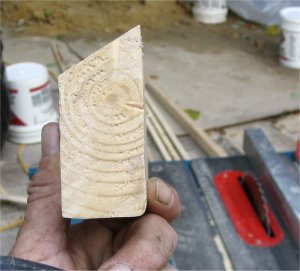
Two by four is ripped to a 30 degree angle
on the table saw in the background. Why 30 degrees and not 45? We decided a 45 would be more likely to chip and hard to remove the forms.
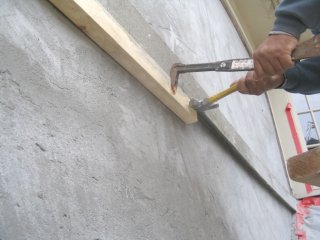
Nails had to be removed from form first, to allow the form to drop down, and not break the angle. Bands had more metal lath nailed on,
filled and allowed to set up two days before removing forms.
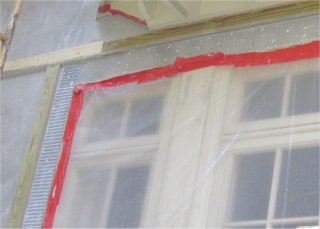
Window surround is made by nailing up one by four forms. Note more metal lath is nailed on.
This is insurance the surrounds won't fail.
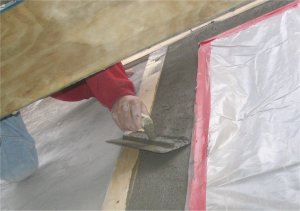
Here mortar is cut back, or trimmed with a trowel after it starts to set firm. This allows 1/8"
space for the finish coat to join flush with the window.
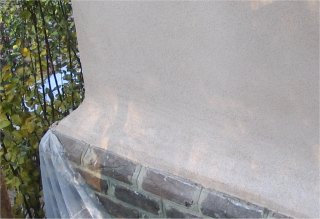
A view of the freshly finished wash. The edge is nosed slightly to combine with the angle of the brick on the water table. The wash is both functional and decorative: the curve accelerates water run off and allows thicker
material to be applied at the most likely point of water infiltration.
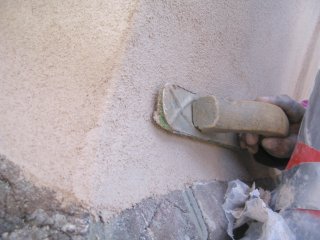
This skinny float allows good contact for floating the finish coat on the wash.
Washes take a long time, but they look cool.
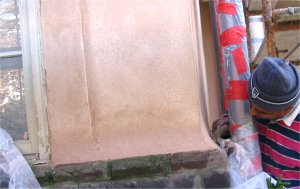
A view of where the window surround "dies" into the wash. Color is #97 "pacific sand" from La Habra stucco.
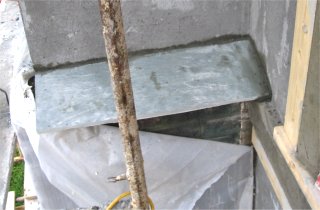
Chimney shoulder is made with a piece
of flagstone. If you are a past reader, you have
seen we do our chimney shoulders this way.
We copied the idea from old houses in Chevy Chase.
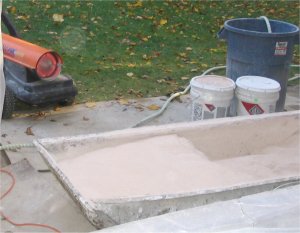
A cold day made me pull out a heater to heat up the "soup". Finish mortar is dry mixed in the mortar box with La Habra color. The wet mix is a mixture of flex-con and water. Finish is White
portland, lime and white sand (crushed quartz).
Sand is a half and half mix of number 1 ( fine)
and number 2 (medium), for crack resistance and strength. Also the two grades of sand make for a richer texture.









